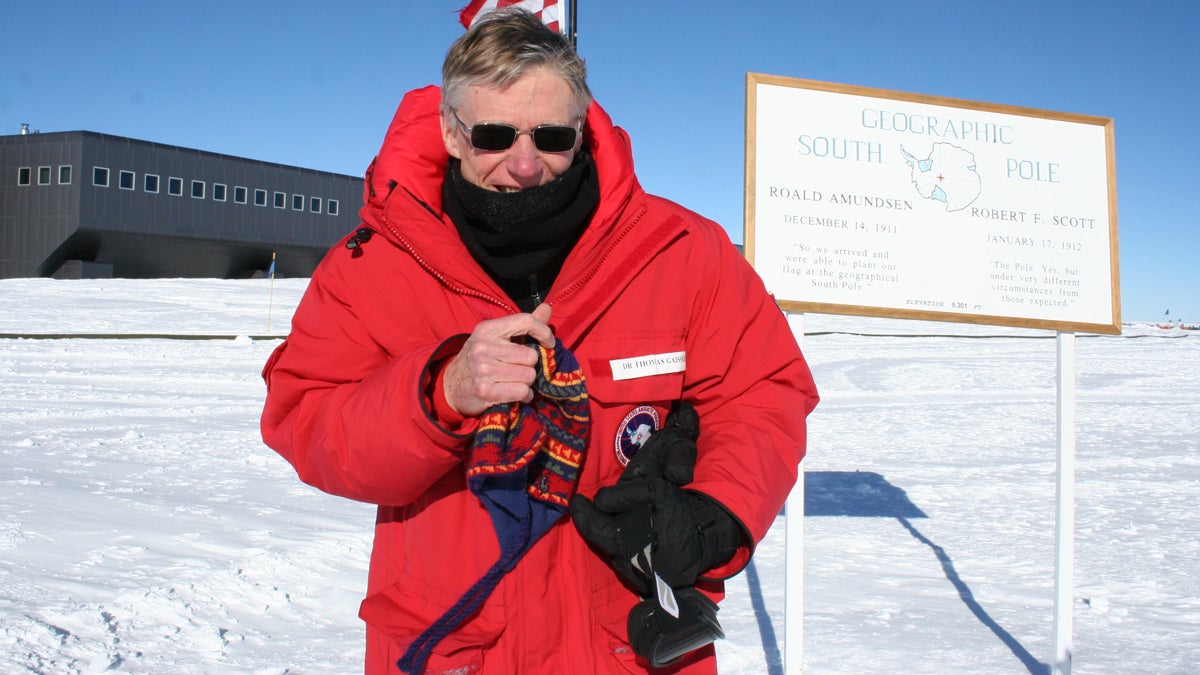Detecting neutrinos at the South Pole with UD physicist Tom Gaisser
Listen
Tom Gaisser at the geographic South Pole. (Photo courtesy of Tom Gaisser)
In our regular segment “So, What Do You Do” physicist Tom Gaisser tells us about searching for neutrinos at the bottom of the Earth.
When you’re living in a brain-heavy region like Philadelphia, you may find yourself standing in line at the coffee shop with a guy who is trying to 3D print organs, or maybe you are sipping cocktails with a researcher growing lettuce leaves containing vaccines, all of which can lead to inspiring conversations. We recreate these kinds of chats for The Pulse in our segment “So, What Do You Do?”
On this installment of “So, What Do You Do,” Philadelphia writer and musician Kristine Kennedy chatted with physicist Tom Gaisser from the University of Delaware about his time spent researching sub-atomic particles at the South Pole. He has helped guide the building of the “Ice Cube,” a massive measuring station with sensors deep under Antarctic ice, designed to detect neutrinos. Neutrinos are one of the fundamental particles that make up our universe. Kennedy is working on a film script set in Antarctica, and she really wanted to ask Gaisser about his time at the bottom of the Earth.
Gaisser has spent seven Antarctic seasons looking for neutrinos at the South Pole, and it’s clear that he relishes his time there despite the harsh climate.
“The National Science Foundation station is a very good place to work,” he says. “The only problem is breathing. You have to have some contact with the air, and then your glasses fog up and your nose gets frostbitten. It’s a nuisance.”
And despite the heady pursuit, it’s not just work at the South Pole. Gaisser enjoys the time socializing with other scientists, drillers, and the bulldozer drivers that keep the forever-drifting snow in check. And, he says, if you ever spend the holidays at the station, you’re in for quite a spectacle.
“There’s a race around the world,” Gaisser laughs. “Well, it’s easy to go around the world at the South Pole, because it’s a pole! And they make floats out of bicycles, people ski, and there’re even some serious runners who actually try to win the race, but it’s basically just a nice party.”
Gaisser sighs when he concedes that his work is hard to describe to an average person, referring to it as science for its own sake, but the picture of the setting his work occurs in makes for unbeatable cocktail party banter.
“The thing about astronomy is learning how big the universe is, and you do see that in Antarctica,” he says. “There’s nothing between you and the horizon. You just see as far as you can.”
WHYY is your source for fact-based, in-depth journalism and information. As a nonprofit organization, we rely on financial support from readers like you. Please give today.




